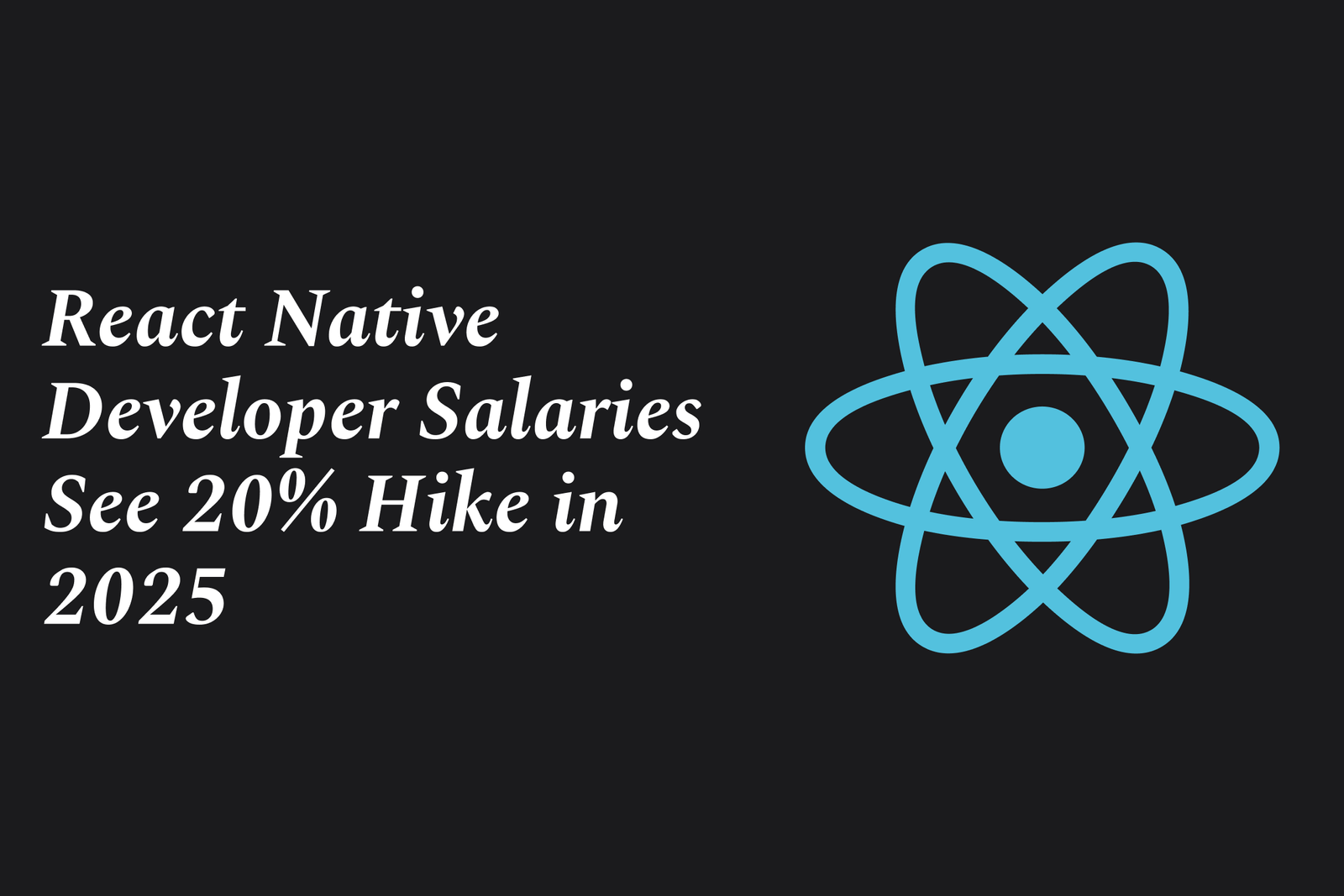React Native Developer Salaries See 20% Hike In 2025
React Native developer salaries are set to rise by 20% in 2025, reflecting growing demand for skilled mobile app developers. Experienced professionals, especially those with 4+ years in established firms, can expect substantial pay hikes despite tax impacts on take-home income.
React Native Developer Salaries See 20% Hike in 2025
1 ) Salary Increase Expectations
React Native developers with approximately 4 years of experience can expect a significant salary hike of around 20% in 2025.
For example, a developer currently earning 13 LPA (Lakhs per annum) in Hyderabad anticipates an increase to roughly 15.5–16 LPA post appraisal in May 2025.
This reflects growing demand and value for experienced React Native professionals in the job market.
2 ) Career Progression and Opportunities
Developers with 4 years of expertise aim to transition from startups to well established product based companies or reputed multinational corporations (MNCs).
Such companies seek proficient React Native developers capable of handling complex mobile app development projects with strong technical skills.
3 ) Impact of Taxation on Salary Hikes
Despite nominal salary hikes, recent tax changes affect the effective take home salary.
A 30% hike on a 10 LPA CTC may effectively result in only about a 22.5% increase in take home income after tax deductions.
Consequently, employees need to negotiate for a higher than expected hike, sometimes around 41%, to realize actual gains in take home pay.
The tax impact is most significant for those earning in the 12 LPA to 20 LPA range.
4 ) Global IT Salary Comparisons
Salaries in countries like Italy lag behind Western Europe and the USA due to differences in local tech ecosystems and the presence of big tech companies.
Some Eastern European countries offer better salary packages and favorable tax conditions, influencing migration and job choices among developers.
Summary: React Native developers with moderate experience are set to benefit from a 20% salary hike in 2025, reflecting their increasing market value. However, tax reforms necessitate careful salary negotiations to secure meaningful take home pay improvements. Moreover, the global disparity in tech salaries underscores the importance of choosing the right employer and location for career growth.
https://justacademy.in/news-detail/new-react-native-cli-features-developers-must-know
https://justacademy.in/news-detail/how-flutter-is-dominating-cross-platform-app-development
https://justacademy.in/news-detail/flutter-design-tokens-implementation
https://justacademy.in/news-detail/why-react-native-is-still-crushing-cross-platform-development-in-2025
https://justacademy.in/news-detail/android-new-api-releases
Related Posts
Java supports GDPR and data privacy by enabling secure data handling through encryption, controlled access, and precise data management. It allows developers to minimize PII exposure, ensure data confidentiality, and design workflows that comply with data protection regulations effectively.
Java code quality tools have evolved to include advanced static analysis, integrated security checks, and AI-powered code reviews. These updates help developers detect bugs, enforce coding standards, and enhance security, streamlining the development process and improving overall code reliability.
Java remains a cornerstone in big tech companies, evolving with modern features like records, pattern matching, and virtual threads. Its robust ecosystem, enhanced performance, and growing AI integrations keep it vital for both legacy systems and innovative new projects.
Java and CI/CD pipeline optimizations streamline Java application development by automating builds, tests, and deployments. They improve efficiency through parallelization, caching, and secure secrets management, enabling faster feedback loops and more reliable, scalable software delivery.
Java supports modern cryptography standards through its flexible Java Cryptography Architecture (JCA), enabling integration of advanced algorithms like AES, EdDSA, and post-quantum tools. Libraries like Bouncy Castle offer FIPS-certified, hardware-accelerated implementations for secure development.
Java 23 enhances record patterns by enabling concise, direct destructuring of record components within pattern matching, simplifying type checks and data extraction. This improvement boosts code readability and expressiveness by reducing boilerplate in handling immutable data classes.
Java remains a top choice for mobile app backends, powering scalable, secure, and high-performance server-side solutions. Latest trends include cloud-native microservices, reactive programming, and enhanced JVM optimizations, enabling efficient, flexible, and robust mobile backend development.
Java SE 24 and LTS Java SE 21 offer enhanced features and performance, while Apache Spark 4.0.0 introduces Scala 2.13 support and advanced ML and SQL capabilities. Together, they empower developers to build scalable, high-performance data applications with modern tools.
JUnit 5 modernizes Java testing with a modular architecture, improved assertions, and seamless Java 8+ support. Beyond JUnit, tools like Mockito and AssertJ enhance mocking and assertions, creating a powerful, flexible ecosystem for writing clean, efficient Java unit tests.
Java plays a pivotal role in cloud automation tools by providing a robust, platform-independent language used to build scalable automation frameworks like Jenkins and Selenium, enabling efficient CI/CD pipelines, testing, and orchestration across diverse cloud environments.










